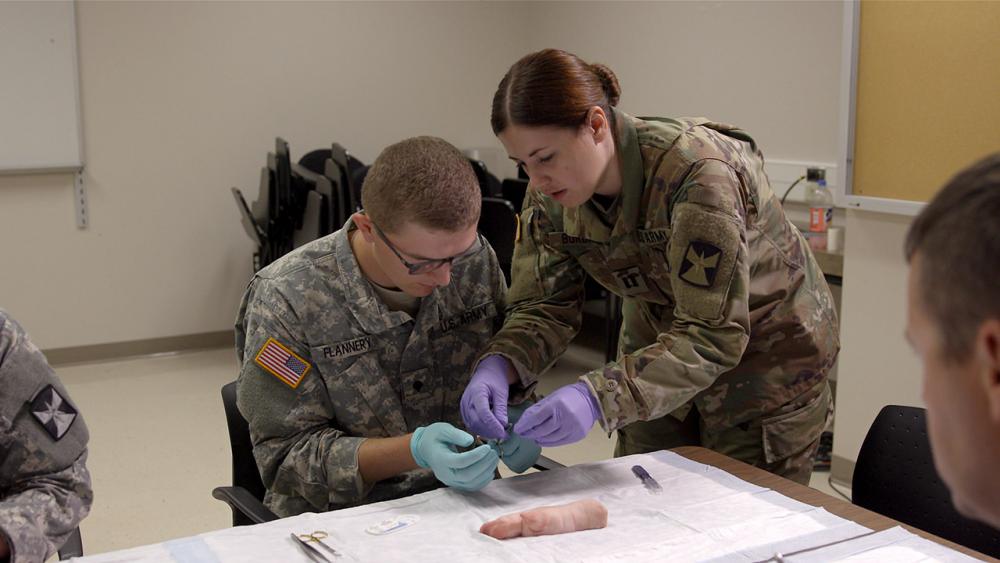
BURDASH: So, let’s come on down here, and now we’ve talked about those wound cares a little bit. So, let’s give a quick demonstration. And then we’ll break into stations here and you all can give it a try.
Simple wounds like this are so, so common. They don’t have to be combat-related. This is, you know, somebody cutting themselves trying to open a package, this is, you know, falling out of a truck, you know, you stumble out and you scrape your leg. So this is something that’s very common, and something we’re guaranteed to see at some point in our careers.
Needle at 90 degrees. And then you go through the skin, and try to come out on the other side of your wound, about the same distance that you went in on. Yeah, and that’s great, what you did right there.
We have a nice partnership actually with a local butcher who gives us a good deal on pig’s feet. We’ve done classes where we do a cricothyrotomy, or cric, and so you have to make a cut into the airway, and place a breathing tube through that. So we’ve bought pig tracheas before, and we’ve also bought racks of ribs to practice doing chest tubes, as if we would between human ribs. And so, I think the butcher gets good business out of us on things that maybe nobody else is buying, so he can’t be wrong with that. But it gives us a really good, tangible experience because a lot of the stuff, you just can’t learn unless you feel it. To put a chest tube in, you have to feel what it feels like to go in between the tissue of ribs. To have the confidence to do a procedure where you have to use a tool on another person, it’s helpful to have done it at some point before, so that, you know, the first time that they’re doing some sort of lifesaving procedure, and they’re realizing they’re going to have to make a cut in somebody’s throat, they aren’t having to do it for the first time just brand new, having never actually held a scalpel and cut something. And so this is what we try to do to prepare them to be safe to be able to do their jobs.
Redirecting your request...
Topic Categories
-
Military Medicine 101
-
Applying + What to Expect
-
Education + Training
-
Careers + Lifestyle